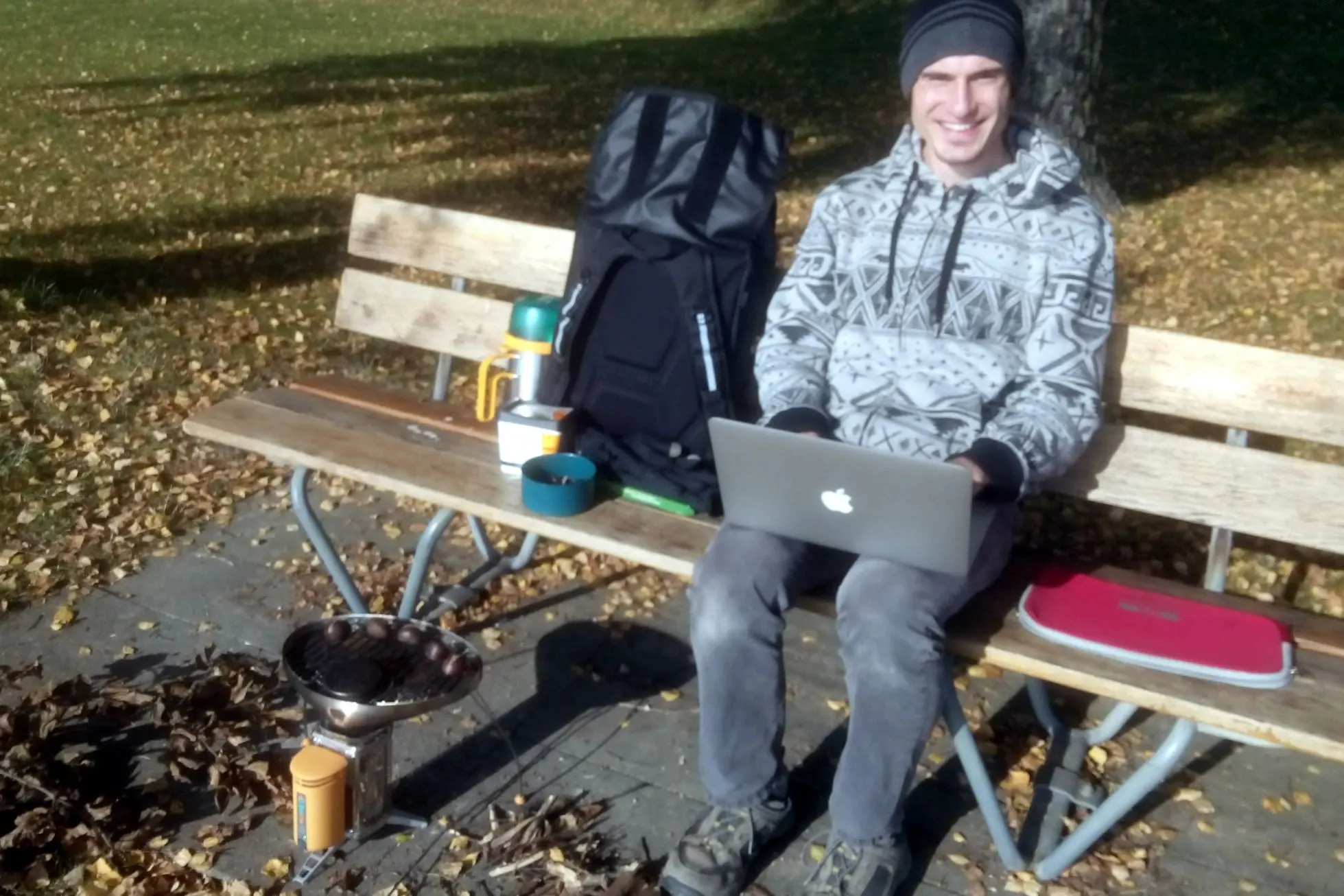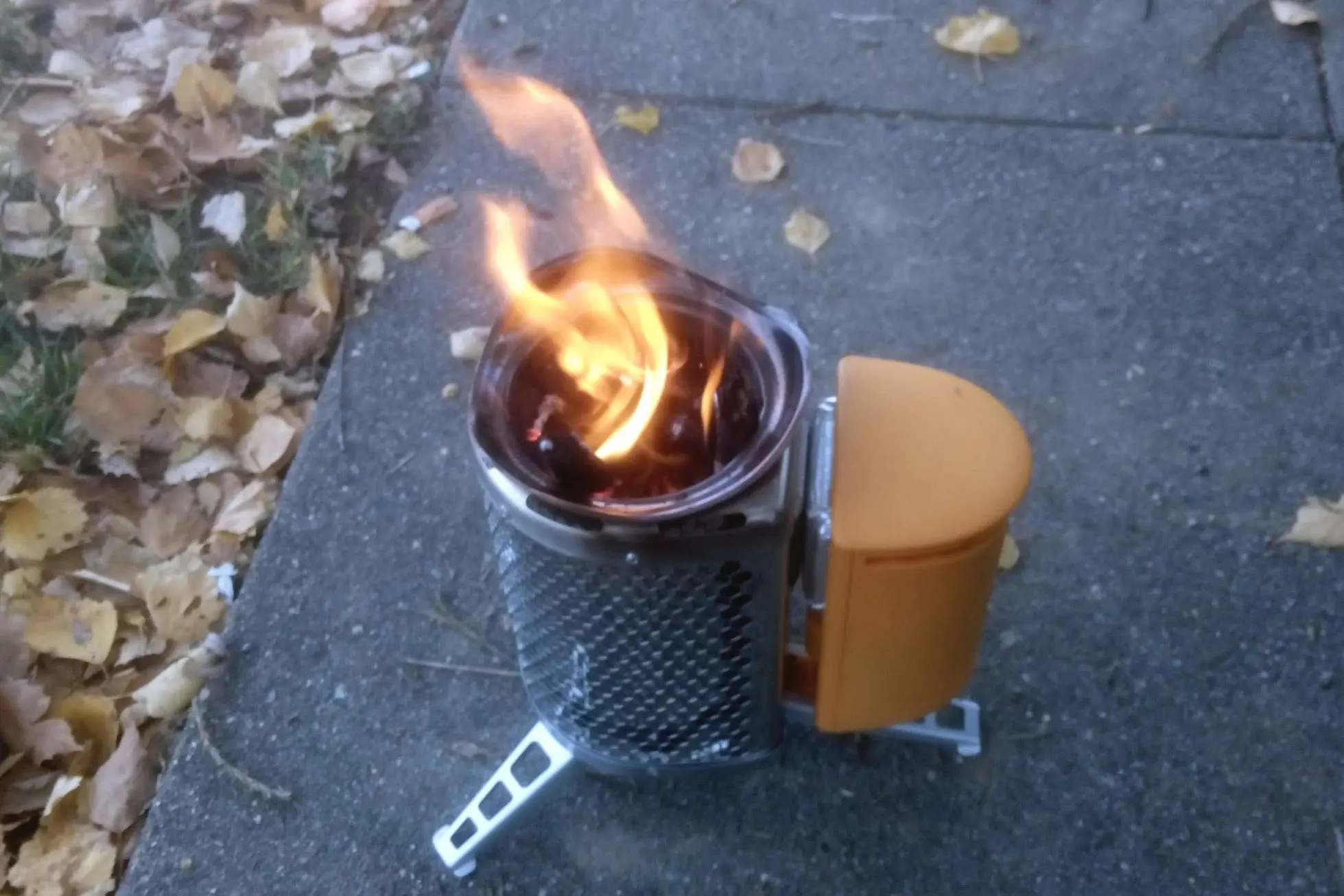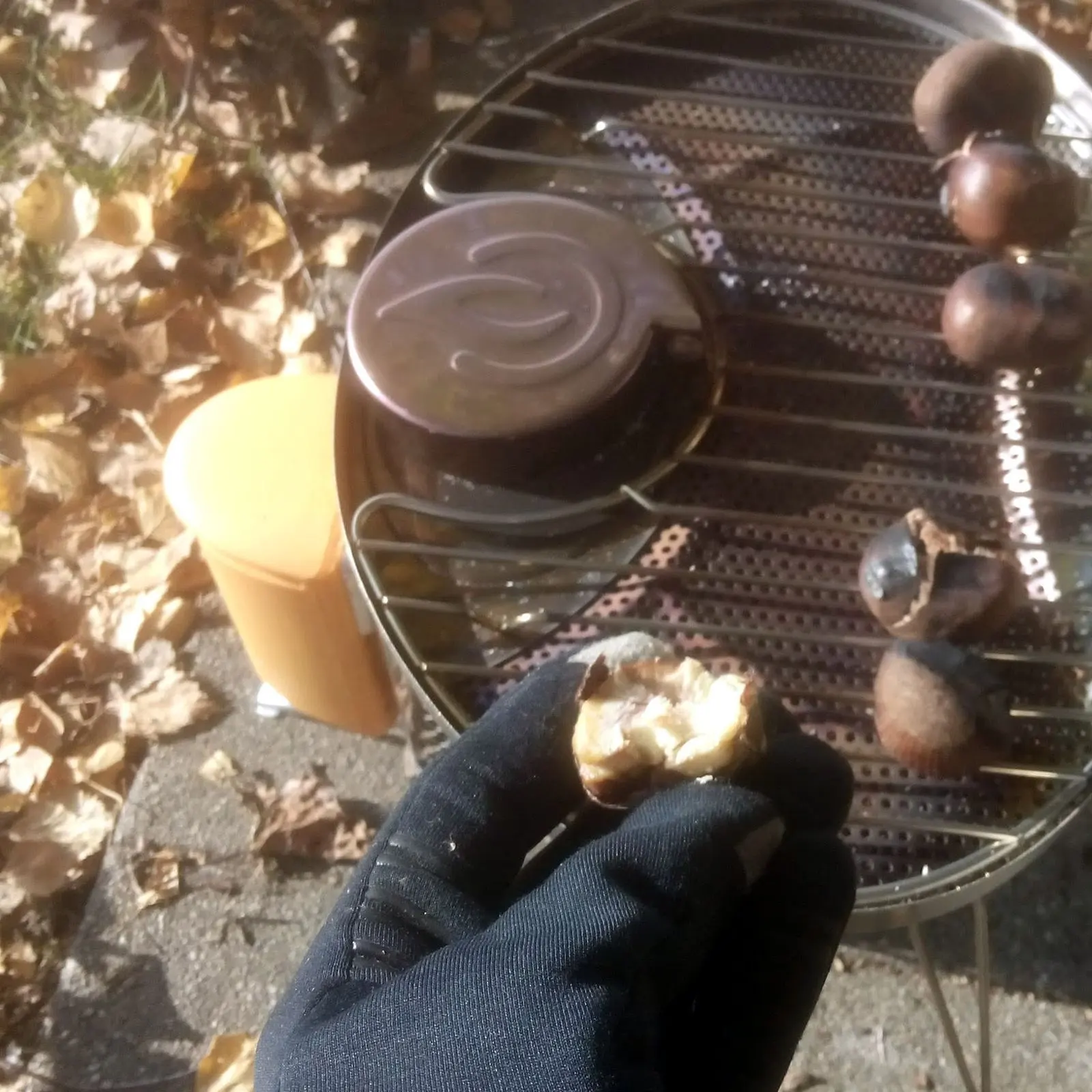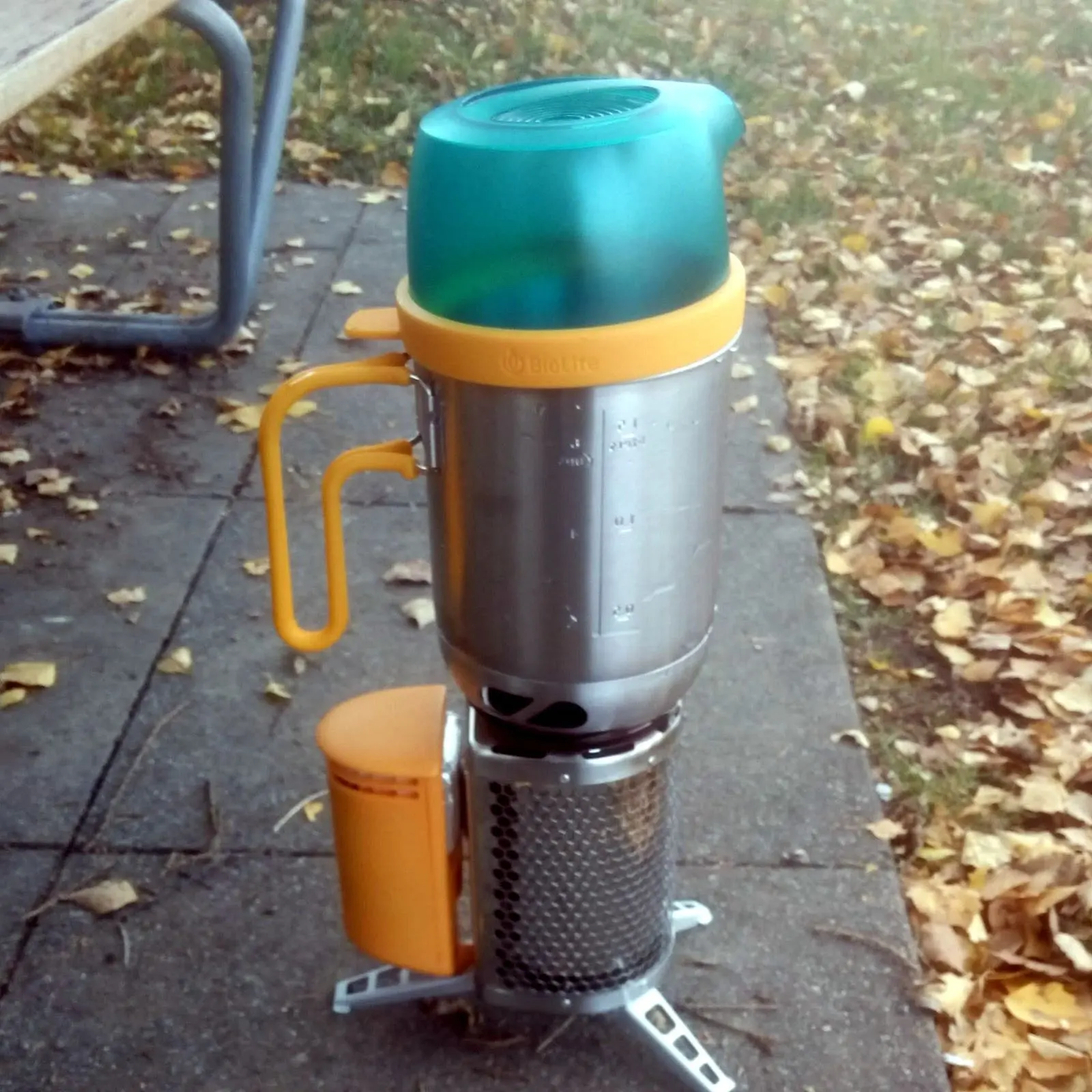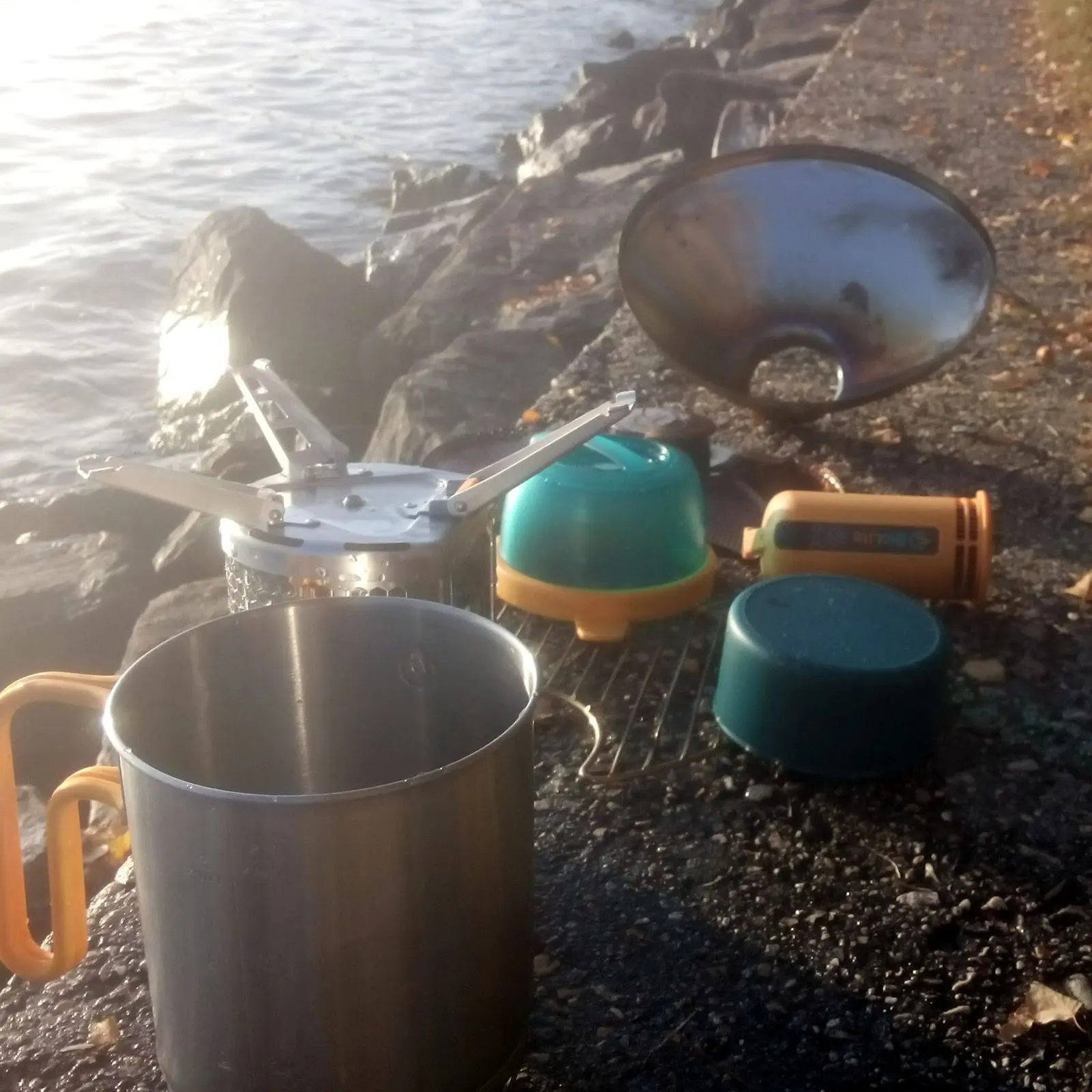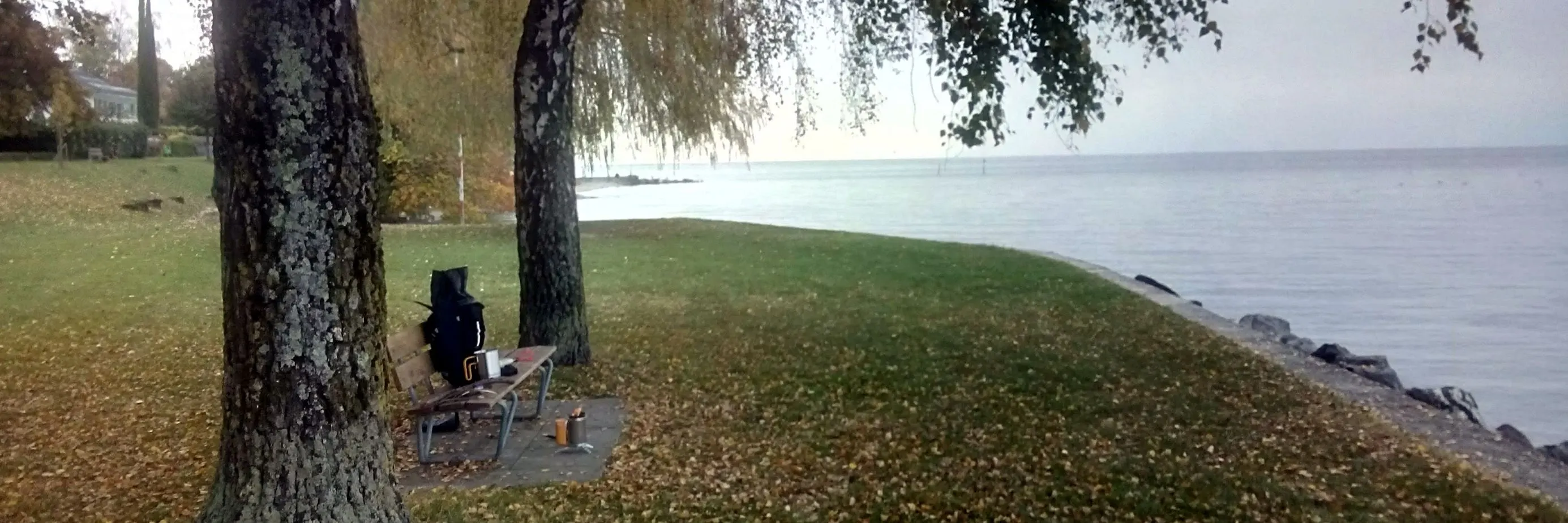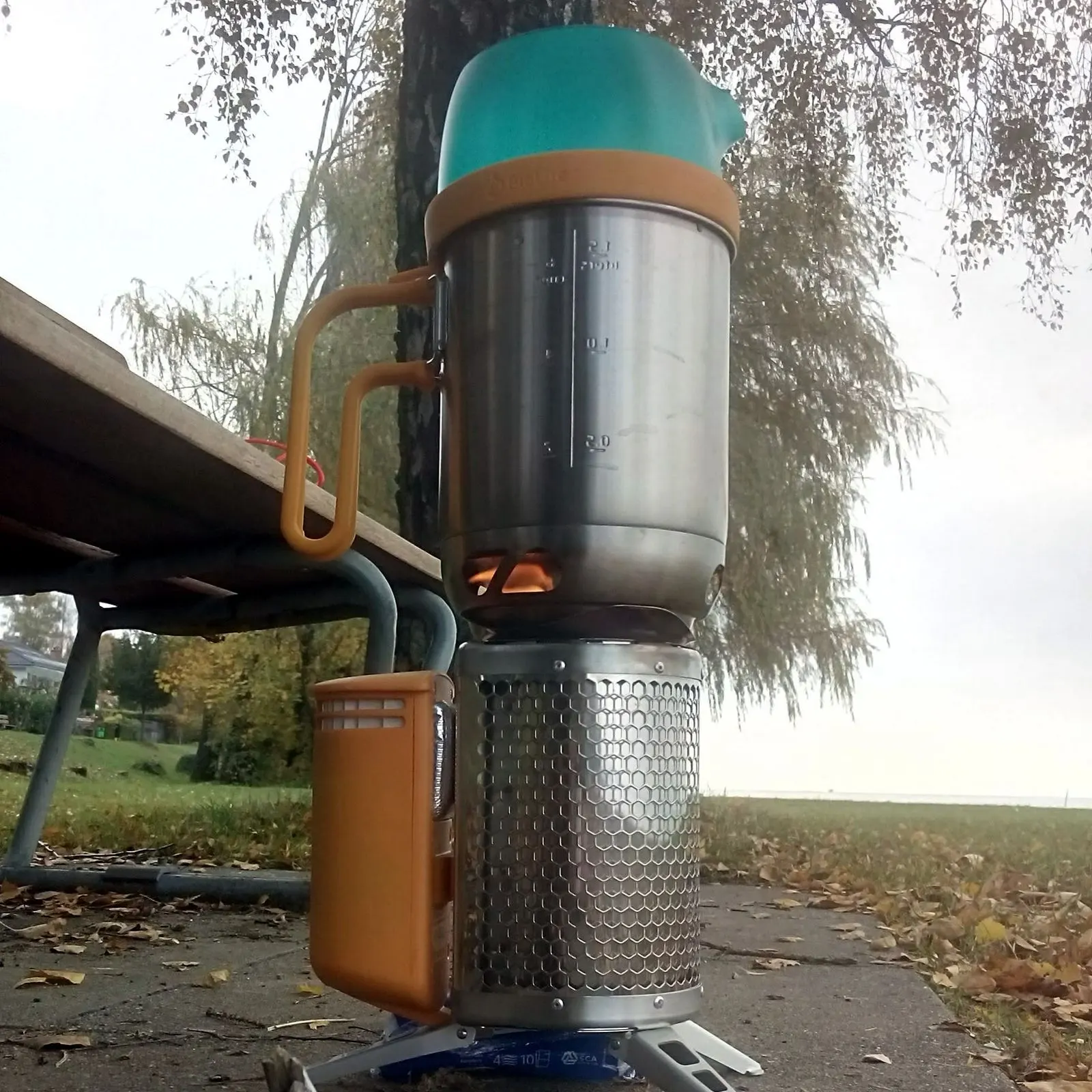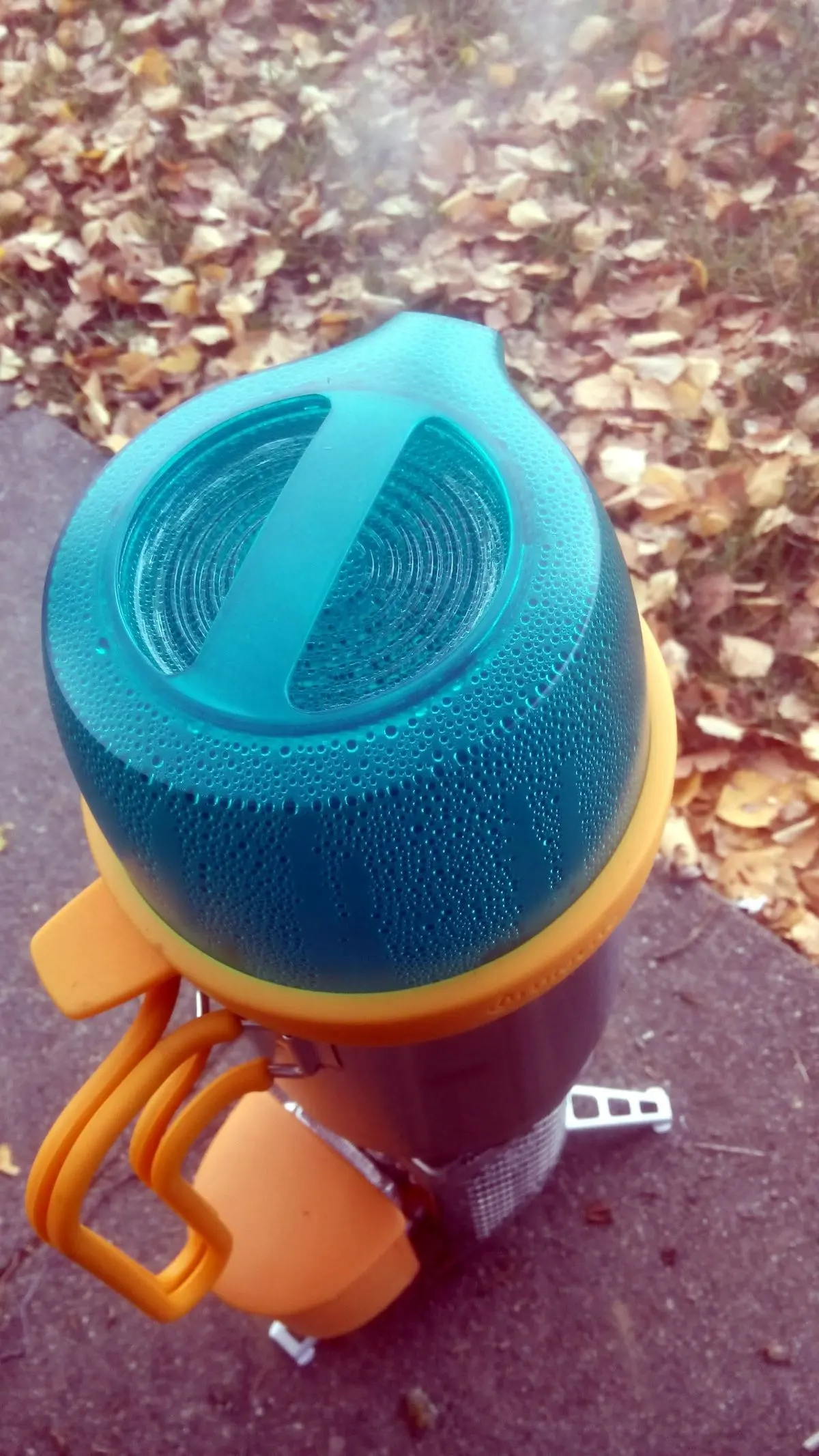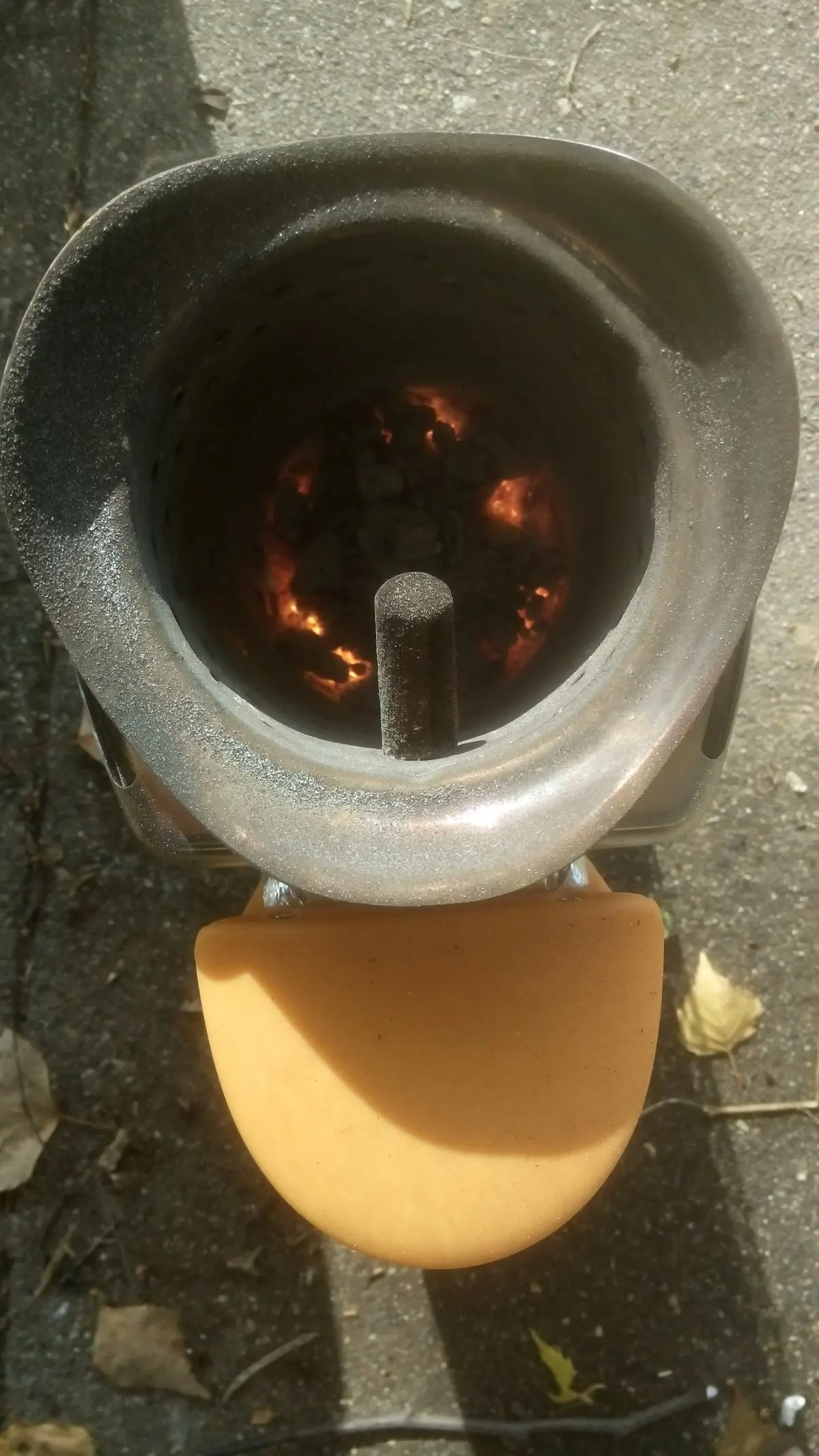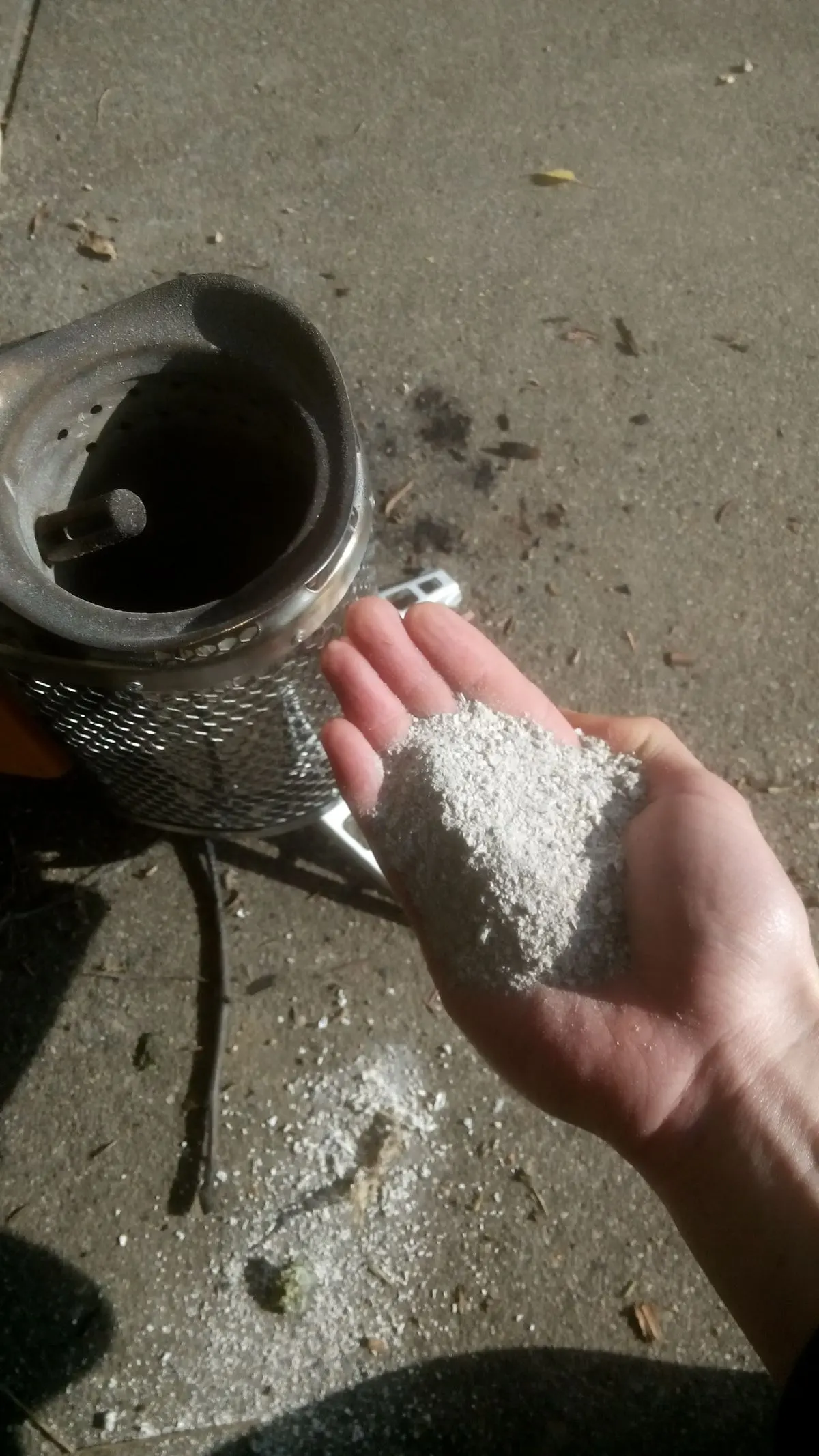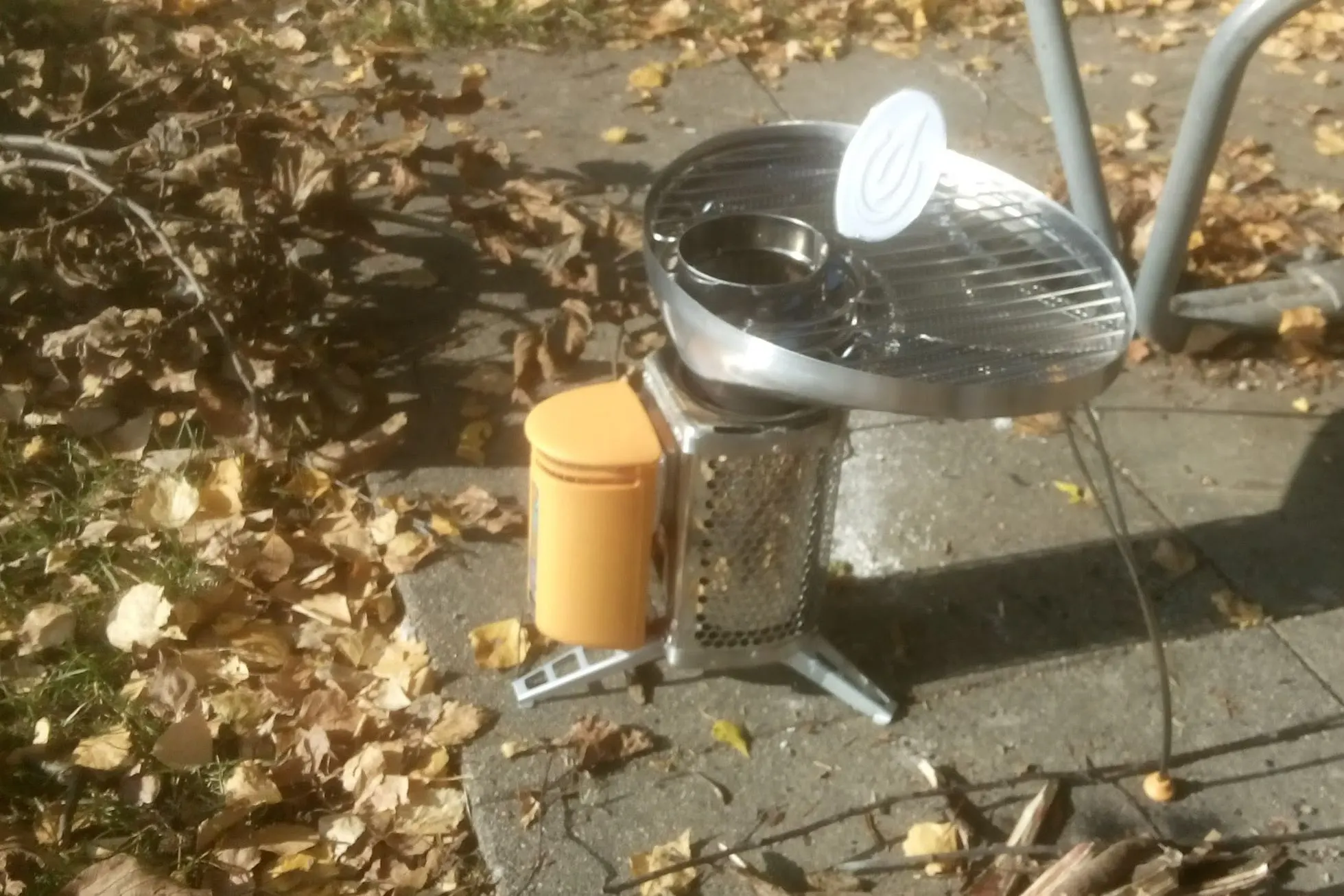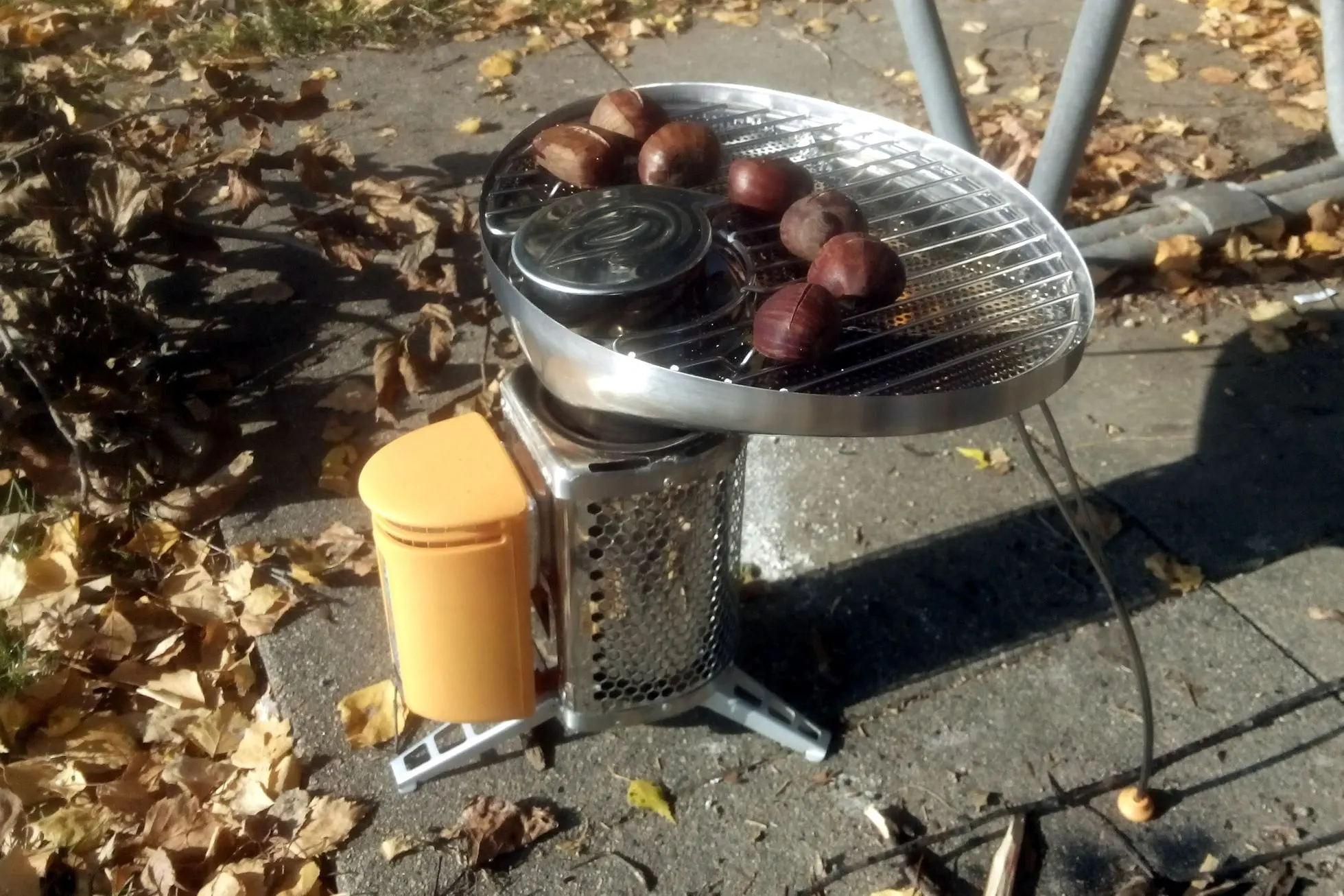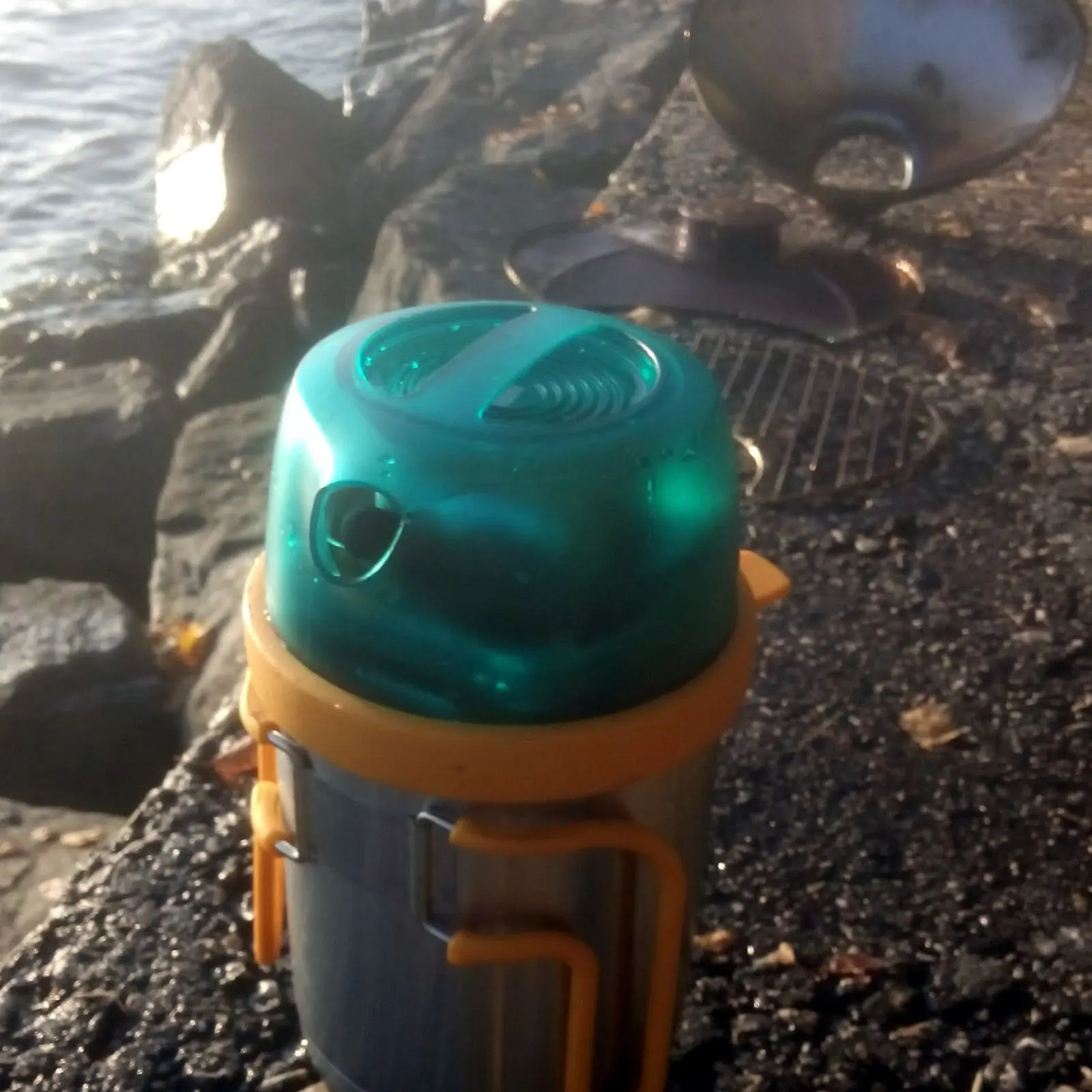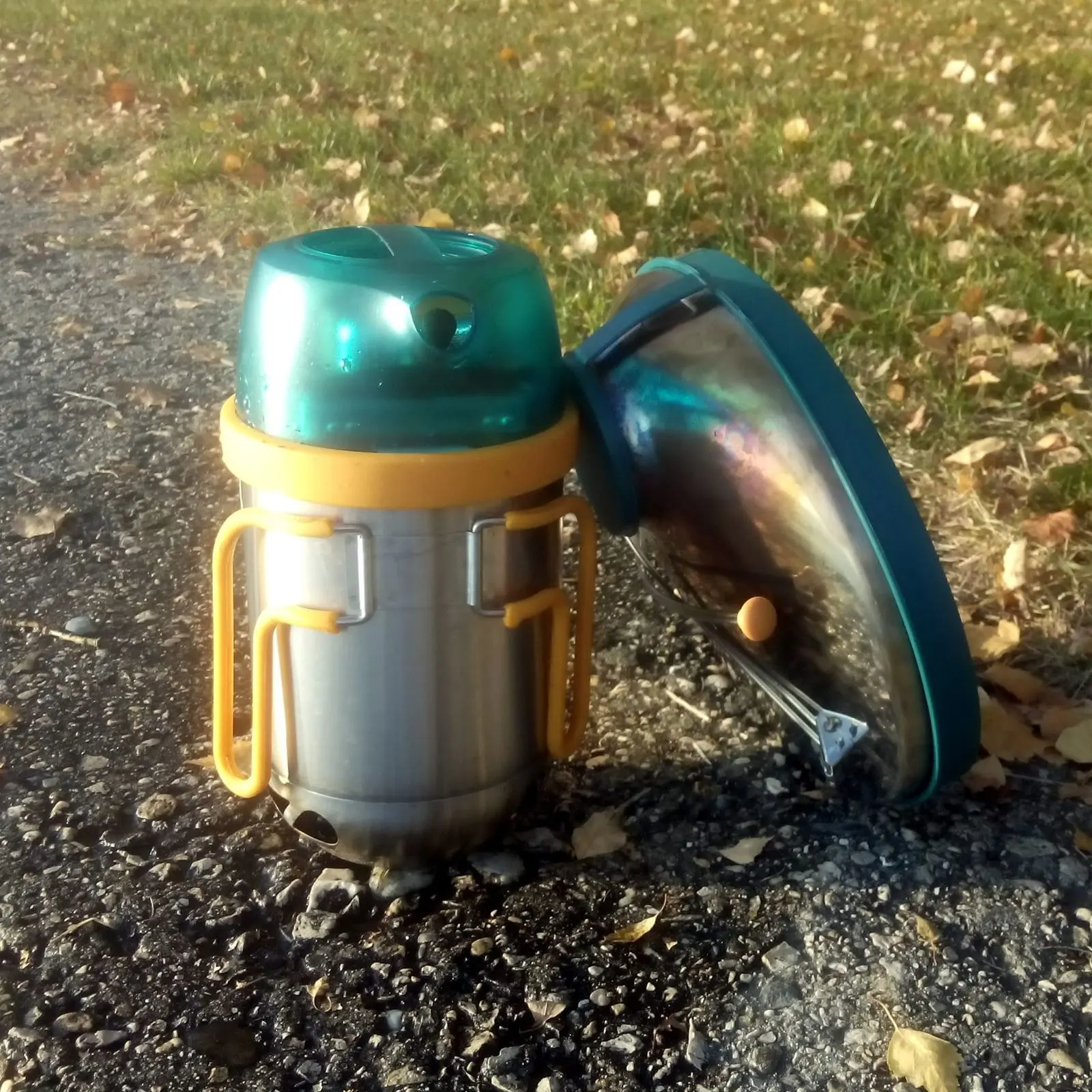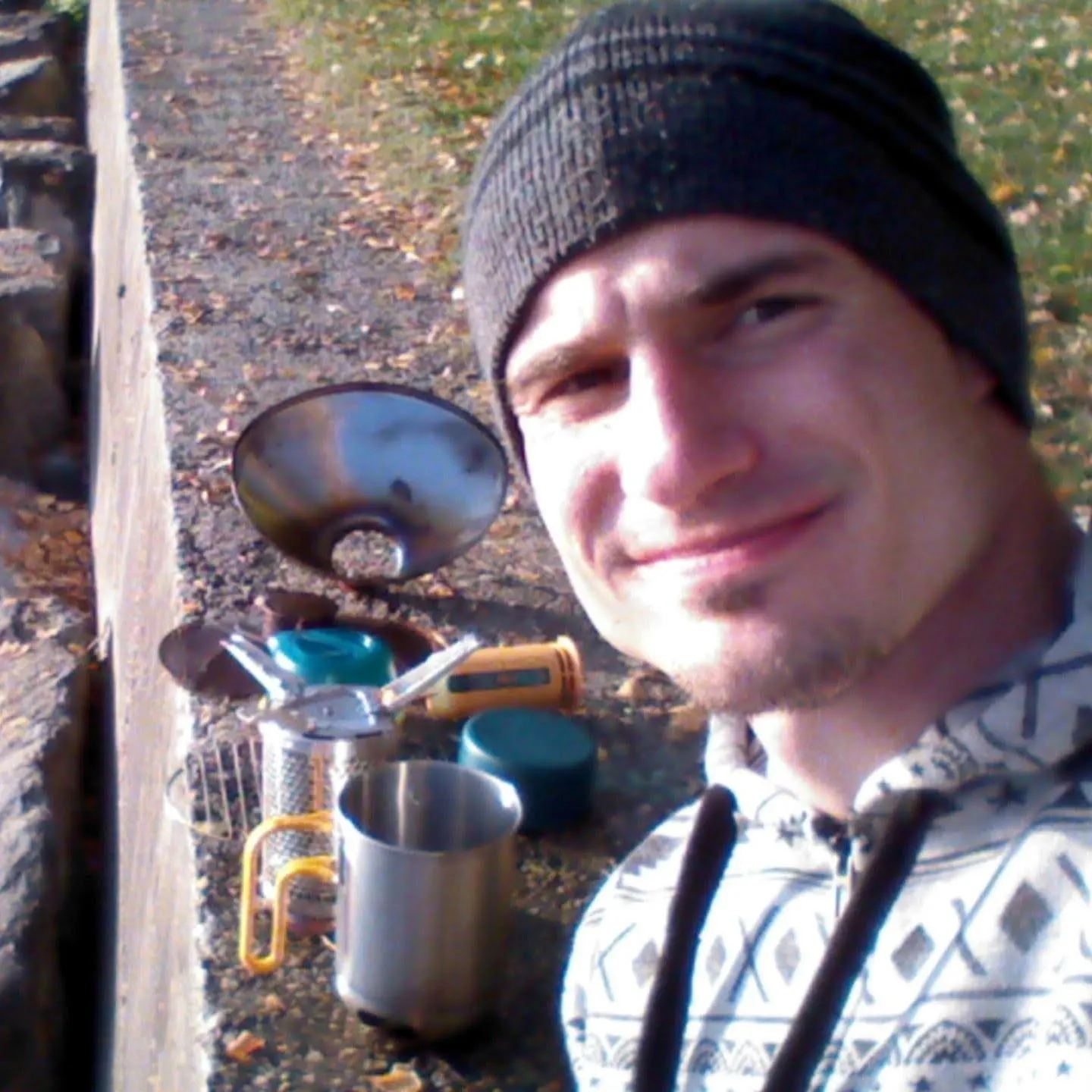Every now and then there’s a product that’s so amazing, so functional, so well thought out, that I feel the urge to tell the world about it. The Biolite campstove is one of these products. It merits this blog post.
As I’m writing this, I’m sitting on a bench at the shores of Lake Geneva. There’s a little breeze, the sun is shining, and the trees around me have colorful autumn leaves. I hear the sound of ducks and other birds, the waves splashing against the shore, the cracking of wood in a fire and the sound of a small fan. Chestnuts are sizzling on a grill, spreading a wonderful autumn smell.
The fan I’m hearing is at the heart of the Biolite campstove. It funnels air into a small metal tube, around 10cm across and 20cm high. A fire is burning merrily inside the tube, fueled by small bits of wood, and oxygen from the fan. Thanks to the closed chamber and the carefully regulated air flow, the wood burns thoroughly, with next to no smoke, leaving nothing but a small quantity of white dusty ash.
But the use of electricity to keep a fire going… isn’t this cheating? Well, not quite. Because it’s the fire that generates electricity to keep the fan going! And the fan generates an oxygen flow to keep the fire going. And the fire generates electricity to keep the fan going… you get it.
Plus, a fire is a powerful element. It generates much more heat than needed to
power a little fan. This means you can connect your phone to the Biolite’s
thermoelectric generator, and charge it. The Biolite has a Firewire (erhm…
USB) port and an integrated accu, and delivers about 2 watts to your devices.
And a fire generates heat. Heat that boils water or roasts chestnuts.
Does it work? Yes, from start to finish. I am amazed by how thoughtfully the Biolite is designed, how well the pieces work together, how the little details make so much sense. Let me give you a few examples:
- The fan fuels air into the burning chamber through a set of holes. These are arranged in pattern that creates a circular air flow (a bit like a tornado). Air seems to flow horizontally along the outer edge of the tube, and then move upward in the center. This means that even the wood on the bottom burns well, and that heat is directed at the center of whatever is cooking.
- Because of the superb air flow, wood burns down almost completely — and then the fan stops! Yes, the Biolite detects temperature changes, and automatically adjusts the fan speed.
- Pieces fit together perfectly. The company sells a pot that holds 1.5l of water/soup/food/… This pot solidly and securely sits on top of the stove when in use. After use, the entire stove plus ventilator fits snugly into the pot. It’s the perfect way to carry everything to your next adventure.
- I’m particularly amazed by the grill. I was sceptical at first, expecting charred food and unevenly distributed heat… but nothing like that happened. In fact, the grill’s “flame spreader” directs the flames evenly, below the surface of the grill. The result: chestnuts that are finger-burning hot but not black.
As I sit here and write, the stove has sustained a fire for about two hours. One can’t see any ashes at the bottom yet. A ladybug is climbing over the stove. The outer parts are isolated and cool, and the little smoke there is doesn’t seem to deter the insect. A passer-by stops and chats with me for a while. “Vous avez un Mac et un feu, ça fait un joli contraste.” I guess she didn’t know that this is the most technologically advanced campfire ever :)
Do I have negative things to say about the Biolite? Well, at about 3l of volume, it takes away more space and weights more than a traditional gasoline cooker. Although it compares favorably with my previous Campingaz stove, which used bulky, heavy butane cartridges. In terms of power they are comparable. I ran a little benchmark: it took me 14 minutes to boil 1l of Lake Geneva water. That’s 98° — 13° = 85 Cal in 14 min => around 420 Watts, or half a typical microwave oven. I’m pretty sure that with a bit of experience and proper wood, one could get even more power out of the Biolite.
This brings me to the second negative point: it does take a bit of experience to use the Biolite. The fire can turn from a roaring blaze to a smoking smoulder surprisingly quickly. This is due to the small chamber and relatively small quantities of wood that are burned. One needs to stay alert and careful, and maintain the right level of wood, neither too much nor too little.
But hey, aren’t we all pyromantic at heart? Isn’t it a joy to watch this little miraculous stove, and break another dry branch in small pieces to keep it going a bit longer? And then to save the blog post, close the laptop, and enjoy the last hot chestnut from a successful outdoor grilling experiment.
Post scriptum
I’m not affiliated with Biolite in any way, nor did anybody influence me for this review. It’s just a brilliant little stove. I would like to extend heartfelt thanks to my friends and colleagues, who discovered it and offered it to me for my birthday. You could not have made a better choice!
